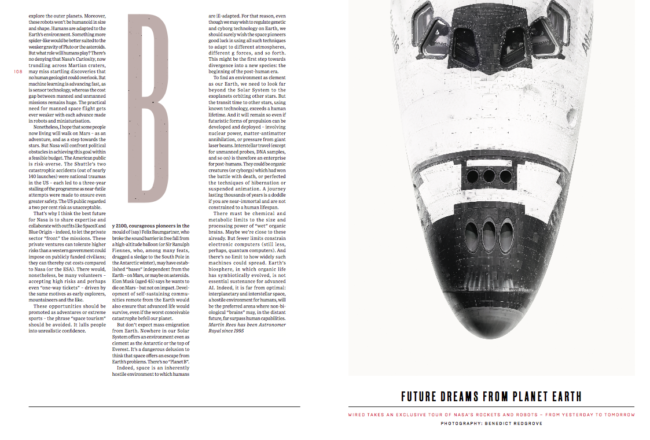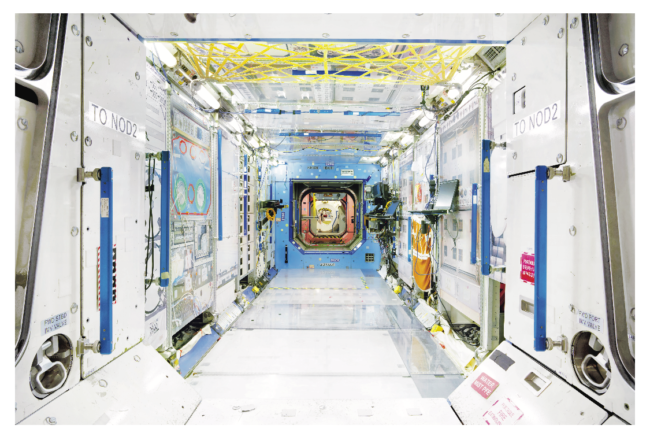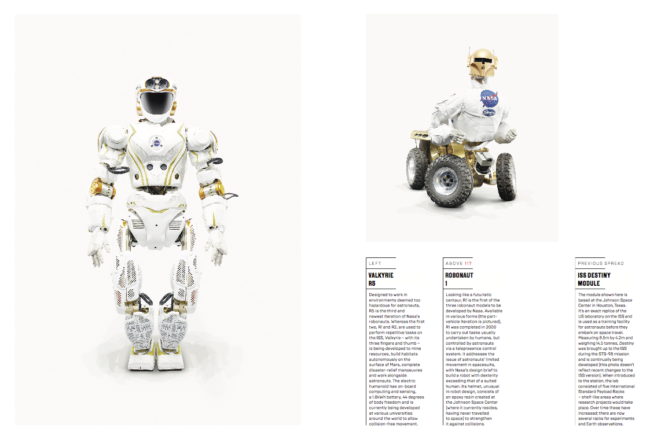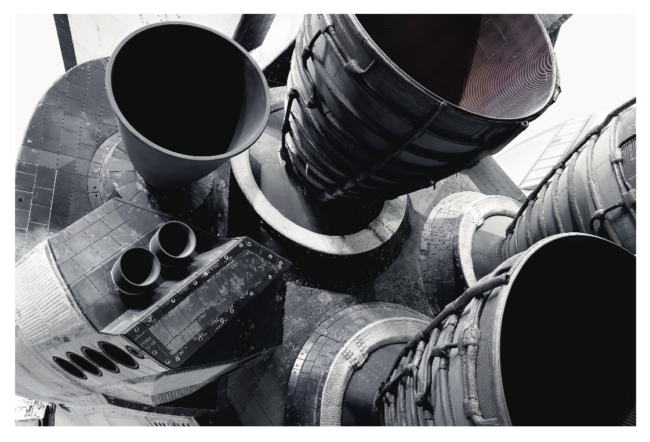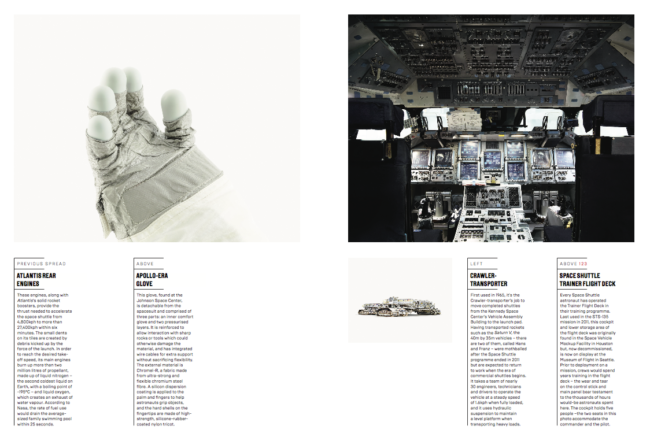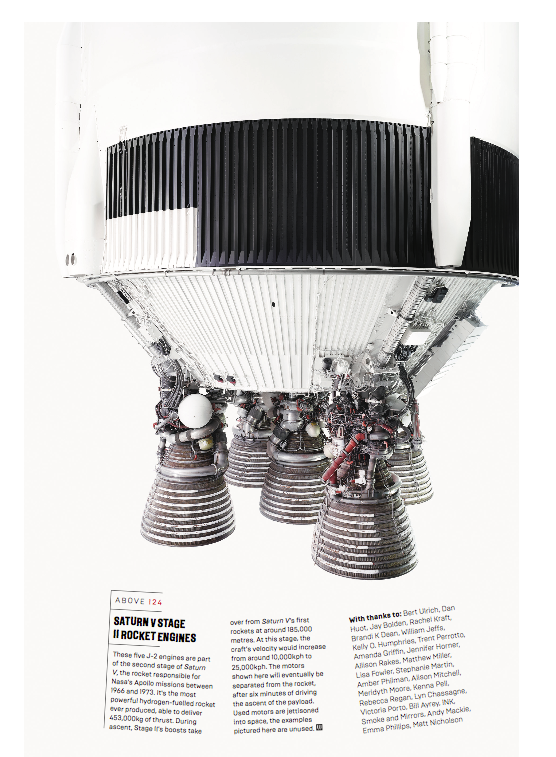WIRED
Creative Director: Andrew Diprose
Director of Photography: Steve Peck
Deputy Director of Photography: Dalia Nassimi
Photographer: Benedict Redgrove
These never-before-seen photographs are part of an eight-year project that took photographer Benedict Redgrove deep inside three NASA facilities across the US. He uses Alpa MAX and 12 STC cameras, stitching together multiple images to create photographs with an epic quality. “I shoot about 40 images,” he explains, “then layer them to achieve the highest definition.” Redgrove’s project won’t be complete until 2018, but WIRED offered its readers an exclusive glimpse into his epic space journey in its 11.16 issue.
Was this photo essay presented to you by Benedict Redgrove with a six-year timeline in mind?
Benedict came to us when he was three years into the project – it was just a labor of love at that point. He got in touch with us in order to gain deeper access at NASA. He thought a bit of WIRED name-dropping might help, and it did – eventually. It took three years of negotiations, and about 400 emails, to get to this point.
What type of clearance was needed for such unprecedented access?
NASA is a bit like an onion – you peel off layer after layer. We encountered a lot of “We cannot help, you need to talk to so-and-so department” along the way. But the more Benedict shot, the more the various departments in NASA understood what we were trying to do, and the more doors opened to him. It was very much a case of finding the right person to talk to at each stage.
Where were the images taken?
Benedict gained access to the Kennedy Space Centre in Florida, Johnson in Houston and the Smithsonian in Virginia. Next up are the Lunar Lab and training facilities.
Six years is a quite a long time horizon. Was this difficult for the magazine to commit to?
Is it difficult to commit to an elaborate documentation of NASA technology by Benedict Redgrove? Absolutely not – we did not bat an eyelid. It didn’t matter how long it was going to take. We knew the results would be a groundbreaking body of work.
How long will this be a running theme within the magazine?
It’s running across 16 pages (on special paper) in our current issue, November 2016, and of course on wired.co.uk. We also have a photography exhibition planned at our annual WIRED conference in London on November 3-4, which will also have a Q&A with Benedict himself.
Future plans?
Benedict will conclude his work with the launch of SLS and Orion in 2018. After that, there are talks of a book and an expansive exhibition with virtually life-size prints!
NASA is an independent agency of the executive branch of the United States federal government, how did this end up in WIRED UK, and how much was published in the US version?
Interest in NASA is not restricted to the US – it has universal appeal. Benedict put it very nicely himself: “To me, there is no other organisation in the world that is more progressive, more exciting or stands more for the betterment of mankind and peace than Nasa. In my opinion, it’s the greatest institution in the world. It involves, science, art, design, engineering, manufacturing, passion, belief, education, information, creation and technology. It’s always moving forward, always seeking answers and finding them, then asking more questions. They educate us, inform us not only about the Universe but also about our planet, and pass down technologies into our everyday lives.”
This collaboration was solely with WIRED UK, but other international editions of WIRED are keen on running the story too. Watch this space.


